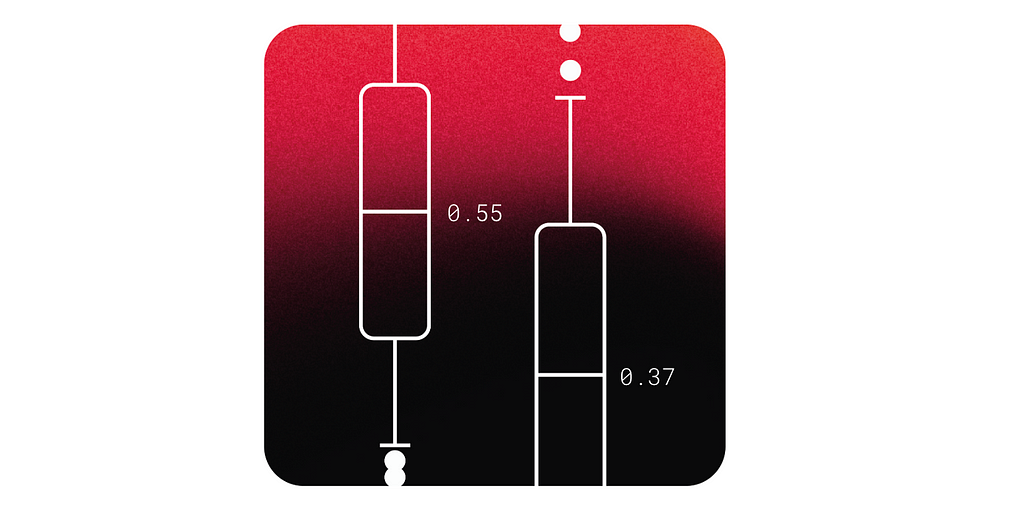Building Modern Desktop Applications with .NET 9: Features and Best Practices
As the demand for robust and feature-rich desktop applications continues to grow, developers seek frameworks that offer both performance and flexibility. .NET 9 emerges as a powerful platform for building modern desktop applications, bringing a host of new features and improvements that streamline development and enhance user experiences. In this article, we'll explore the key advancements in .NET 9 for desktop development and outline best practices to help you leverage these enhancements effectively. Table of Contents Introduction Key Features of .NET 9 for Desktop Development Enhanced Performance Improved UI Frameworks Cross-Platform Capabilities Advanced Tooling and IDE Support Security Enhancements Building Desktop Applications with .NET 9 Choosing the Right UI Framework Optimizing Application Performance Implementing Modern UI/UX Designs Best Practices for Modern Desktop Development Adopt MVVM Pattern Leverage Asynchronous Programming Ensure Application Security Utilize Dependency Injection Implement Comprehensive Testing Case Study: Building a Productivity App with .NET 9 Conclusion Resources Introduction .NET 9 builds upon the solid foundation of its predecessors, offering enhanced performance, improved UI frameworks, and a more streamlined development experience for desktop applications. Whether you're developing for Windows using WPF or WinForms, or aiming for cross-platform compatibility with MAUI, .NET 9 provides the tools and features necessary to create modern, high-performance desktop applications. Key Features of .NET 9 for Desktop Development Enhanced Performance Performance has always been a cornerstone of the .NET framework, and .NET 9 takes it a step further with: Optimized Just-In-Time (JIT) Compilation: Faster startup times and reduced memory usage enhance overall application responsiveness. Improved Garbage Collection (GC): More efficient memory management minimizes latency and ensures smoother application performance, especially under heavy loads. Improved UI Frameworks .NET 9 introduces significant enhancements to UI frameworks, making it easier to build visually appealing and responsive desktop applications: WPF and WinForms Enhancements: Updated controls, better rendering performance, and improved accessibility features. MAUI Advancements: .NET Multi-platform App UI (MAUI) continues to evolve, enabling developers to write once and deploy across Windows, macOS, and Linux. Cross-Platform Capabilities With .NET 9, building cross-platform desktop applications has never been easier: Unified Platform: MAUI provides a single project system for targeting multiple platforms, reducing code duplication and simplifying maintenance. Enhanced Compatibility: Improved support for macOS and Linux ensures consistent application performance across operating systems. Advanced Tooling and IDE Support Productivity is boosted with the latest updates in tooling: Visual Studio 2022 Enhancements: Improved debugging tools, better IntelliSense, and seamless integration with .NET 9 features. Hot Reload for Desktop Apps: Apply code changes in real-time without restarting the application, significantly speeding up the development cycle. Security Enhancements Security remains a top priority with .NET 9: Secure Coding Practices: Built-in support for modern authentication and authorization protocols ensures applications are secure by default. Data Protection: Enhanced APIs for encrypting sensitive data safeguard applications against potential threats. Building Desktop Applications with .NET 9 Choosing the Right UI Framework Selecting the appropriate UI framework is crucial: WPF (Windows Presentation Foundation): Ideal for Windows-specific applications with rich UI requirements. WinForms: Suitable for simpler, quicker-to-develop desktop applications. MAUI (Multi-platform App UI): Best for applications targeting multiple platforms. Optimizing Application Performance To ensure your application runs smoothly: Minimize Startup Time: Utilize the optimized JIT compiler and preloading techniques. Efficient Resource Management: Leverage improved GC mechanisms to prevent memory leaks. Implementing Modern UI/UX Designs Creating a modern and intuitive user interface enhances user satisfaction: Responsive Design: Utilize the latest UI controls to adapt seamlessly to different screen sizes. Accessibility Features: Incorporate features like keyboard navigation and screen reader support. Best Practices for Modern Desktop Development Adopt MVVM Pattern The Model-View-ViewModel (MVVM) pattern separates the UI from the business logic, making the codebase more maintainable: public class MainViewModel : INotifyPropertyChanged { private string _titl

As the demand for robust and feature-rich desktop applications continues to grow, developers seek frameworks that offer both performance and flexibility. .NET 9 emerges as a powerful platform for building modern desktop applications, bringing a host of new features and improvements that streamline development and enhance user experiences. In this article, we'll explore the key advancements in .NET 9 for desktop development and outline best practices to help you leverage these enhancements effectively.
Table of Contents
- Introduction
-
Key Features of .NET 9 for Desktop Development
- Enhanced Performance
- Improved UI Frameworks
- Cross-Platform Capabilities
- Advanced Tooling and IDE Support
- Security Enhancements
-
Building Desktop Applications with .NET 9
- Choosing the Right UI Framework
- Optimizing Application Performance
- Implementing Modern UI/UX Designs
-
Best Practices for Modern Desktop Development
- Adopt MVVM Pattern
- Leverage Asynchronous Programming
- Ensure Application Security
- Utilize Dependency Injection
- Implement Comprehensive Testing
- Case Study: Building a Productivity App with .NET 9
- Conclusion
- Resources
Introduction
.NET 9 builds upon the solid foundation of its predecessors, offering enhanced performance, improved UI frameworks, and a more streamlined development experience for desktop applications. Whether you're developing for Windows using WPF or WinForms, or aiming for cross-platform compatibility with MAUI, .NET 9 provides the tools and features necessary to create modern, high-performance desktop applications.
Key Features of .NET 9 for Desktop Development
Enhanced Performance
Performance has always been a cornerstone of the .NET framework, and .NET 9 takes it a step further with:
- Optimized Just-In-Time (JIT) Compilation: Faster startup times and reduced memory usage enhance overall application responsiveness.
- Improved Garbage Collection (GC): More efficient memory management minimizes latency and ensures smoother application performance, especially under heavy loads.
Improved UI Frameworks
.NET 9 introduces significant enhancements to UI frameworks, making it easier to build visually appealing and responsive desktop applications:
- WPF and WinForms Enhancements: Updated controls, better rendering performance, and improved accessibility features.
- MAUI Advancements: .NET Multi-platform App UI (MAUI) continues to evolve, enabling developers to write once and deploy across Windows, macOS, and Linux.
Cross-Platform Capabilities
With .NET 9, building cross-platform desktop applications has never been easier:
- Unified Platform: MAUI provides a single project system for targeting multiple platforms, reducing code duplication and simplifying maintenance.
- Enhanced Compatibility: Improved support for macOS and Linux ensures consistent application performance across operating systems.
Advanced Tooling and IDE Support
Productivity is boosted with the latest updates in tooling:
- Visual Studio 2022 Enhancements: Improved debugging tools, better IntelliSense, and seamless integration with .NET 9 features.
- Hot Reload for Desktop Apps: Apply code changes in real-time without restarting the application, significantly speeding up the development cycle.
Security Enhancements
Security remains a top priority with .NET 9:
- Secure Coding Practices: Built-in support for modern authentication and authorization protocols ensures applications are secure by default.
- Data Protection: Enhanced APIs for encrypting sensitive data safeguard applications against potential threats.
Building Desktop Applications with .NET 9
Choosing the Right UI Framework
Selecting the appropriate UI framework is crucial:
- WPF (Windows Presentation Foundation): Ideal for Windows-specific applications with rich UI requirements.
- WinForms: Suitable for simpler, quicker-to-develop desktop applications.
- MAUI (Multi-platform App UI): Best for applications targeting multiple platforms.
Optimizing Application Performance
To ensure your application runs smoothly:
- Minimize Startup Time: Utilize the optimized JIT compiler and preloading techniques.
- Efficient Resource Management: Leverage improved GC mechanisms to prevent memory leaks.
Implementing Modern UI/UX Designs
Creating a modern and intuitive user interface enhances user satisfaction:
- Responsive Design: Utilize the latest UI controls to adapt seamlessly to different screen sizes.
- Accessibility Features: Incorporate features like keyboard navigation and screen reader support.
Best Practices for Modern Desktop Development
Adopt MVVM Pattern
The Model-View-ViewModel (MVVM) pattern separates the UI from the business logic, making the codebase more maintainable:
public class MainViewModel : INotifyPropertyChanged
{
private string _title;
public string Title
{
get => _title;
set
{
_title = value;
OnPropertyChanged(nameof(Title));
}
}
// Implementation of INotifyPropertyChanged...
}
Leverage Asynchronous Programming
Asynchronous programming ensures responsiveness during long-running operations:
public async Task LoadDataAsync()
{
var data = await _dataService.GetDataAsync();
// Update UI with data
}
Ensure Application Security
Implement robust security measures:
- Strong Authentication: Use modern protocols like OAuth 2.0.
- Data Encryption: Utilize .NET’s APIs to encrypt sensitive data.
Utilize Dependency Injection
Dependency Injection (DI) promotes loose coupling and enhances testability:
public class MainWindow : Window
{
private readonly IDataService _dataService;
public MainWindow(IDataService dataService)
{
_dataService = dataService;
InitializeComponent();
}
}
Implement Comprehensive Testing
Ensure reliability through various testing strategies:
- Unit Testing: Validate individual components.
- Integration Testing: Verify collaboration between components.
- UI Testing: Automate UI tests.
Case Study: Building a Productivity App with .NET 9
A hypothetical productivity application demonstrates .NET 9’s capabilities:
- Framework Selection: MAUI for cross-platform support.
- UI Design: Responsive layouts using MAUI controls.
- Asynchronous Operations: Real-time data synchronization.
- Security Measures: JWT-based authentication and data encryption.
- Performance Optimization: Leveraging GC and JIT improvements.
Conclusion
.NET 9 represents a significant advancement for desktop application development, offering enhanced performance, improved UI frameworks, cross-platform capabilities, and robust security features. By leveraging these tools and adhering to best practices, developers can build modern, high-performance desktop applications that meet evolving user needs.
Resources
What's Your Reaction?


















































